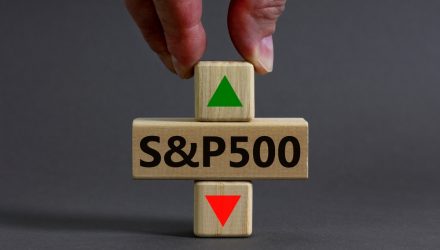A traditional 60/40 stock/bond portfolio has been a tried and tested strategy among financial planners. But income seekers can specifically reap the benefits of both assets with exposure to one active exchange-traded fund: the NEOS Enhanced Income Aggregate Bond ETF (BNDI).
The convenience of exposure to one ETF also means an investor needn’t constantly monitor their allocations to stocks and bonds. BNDI’s active management strategy translates to more of a set-it-and-forget-it strategy for investors. So regardless of the current macroeconomic environment, BNDI can flex with any changes.
S&P 500 Keeps Reaching New Highs
This is especially helpful now as the S&P 500 continues to push to new highs after a 2023 market rally. At the same time, the bond markets are seeing increased issuance on the prospects of rate cuts to come. So fixed income investors may want to lock in higher yields now. With BNDI, investors don’t have to worry about financial headlines, given its flexibility.
Overall, BNDI seeks to distribute monthly income generated from investing in a representative portfolio of the U.S. aggregate bond market, while at the same time implementing a data-driven put option strategy. As mentioned, active management allows BNDI to maintain pliability in any market environment, while also taking advantage of tax-loss harvesting opportunities.
To extract more income from the market and capture any upside in the S&P 500 should it continue reaching higher heights, the fund includes the sale of SPX Index options classified as section 1256 contracts, which are subject to lower 60/40 tax rates. This is also where the fund’s tax efficiency offers investors income while decreasing their tax burden, another added benefit for investors.
BNDI currently has a net expense ratio of 0.58%. The distribution yield is 5.52% (as of 12/31/23). This is calculated by multiplying the most recent distribution by 12 to annualize it, and then dividing by the net asset value of BNDI.
Maintaining Core Bond Exposure
In addition to the aforementioned benefits, BNDI does all this while maintaining core bond exposure. The anticipation of lower interest rates could also add bullishness for the overall bond market for the rest of 2024. If that’s the case, investors may want to ramp up their core bond exposure to take advantage of rising bond prices.
To get core exposure, BNDI has two common options in the convenience of one fund. One is the iShares Core US Aggregate Bond ETF (AGG), which seeks to track the investment results of an index composed of the total U.S. investment-grade bond market.
The other is the Vanguard Total Bond Market Index Fund ETF Shares (BND), which seeks to track the performance of the Bloomberg U.S. Aggregate Float Adjusted Index. The index represents a wide spectrum of public, investment-grade, taxable, fixed income securities in the United States, including government, corporate, and international dollar-denominated bonds, as well as mortgage-backed and asset-backed securities, all with maturities of more than one year.
BNDI offers almost a 50/50 split for exposure between the two funds, giving investors that core exposure to supplement their equities portfolios. Additionally, with the income component added with its put option strategy, BNDI adds a monthly income component that should help fixed income investors seeking additional yield when rate cuts eventually take place.
For more news, information, and analysis, visit the Tax-Efficient Income Channel.

